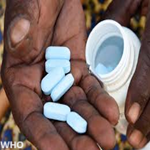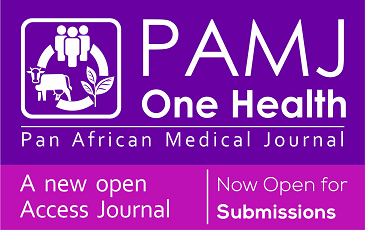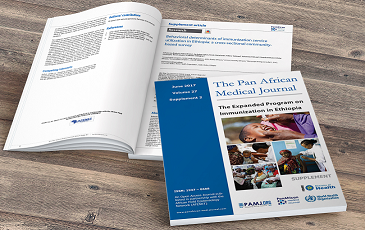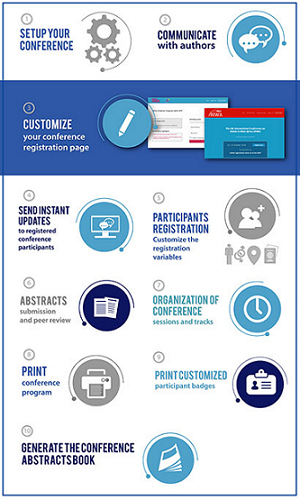Breast cancer patientsí presentation for oncological treatment: a single centre study
Akinbolaji Andrew Akinkuolie, Amarachukwu Chiduziem Etonyeaku, Olalekan Olasehinde, Olukayode Adeolu Arowolo, Rereloluwa Nicodemus Babalola
Corresponding author: Akinbolaji Andrew Akinkuolie, Department of Surgery, Obafemi Awolowo University, Ile-Ife, Nigeria 
Received: 14 Nov 2015 - Accepted: 01 Feb 2016 - Published: 13 May 2016
Domain: Clinical medicine
Keywords: Breast cancer, presentation, oncological treatment
©Akinbolaji Andrew Akinkuolie et al. Pan African Medical Journal (ISSN: 1937-8688). This is an Open Access article distributed under the terms of the Creative Commons Attribution International 4.0 License (https://creativecommons.org/licenses/by/4.0/), which permits unrestricted use, distribution, and reproduction in any medium, provided the original work is properly cited.
Cite this article: Akinbolaji Andrew Akinkuolie et al. Breast cancer patientsí presentation for oncological treatment: a single centre study. Pan African Medical Journal. 2016;24:63. [doi: 10.11604/pamj.2016.24.63.8432]
Available online at: https://www.panafrican-med-journal.com/content/article/24/63/full
Original article 
Breast cancer patientsí presentation for oncological treatment: a single centre study
Breast cancer patientsí presentation for oncological treatment: a single centre study
Akinbolaji Andrew Akinkuolie1,&, Amarachukwu Chiduziem Etonyeaku1, Olalekan Olasehinde1, Olukayode Adeolu Arowolo1, Rereloluwa Nicodemus Babalola2
1Department of Surgery, Obafemi Awolowo University, Ile-Ife, Nigeria, 2Department of Surgery, Obafemi Awolowo University, Teaching Hospitals Complex Ile-Ife, Nigeria
&Corresponding author
Akinbolaji Andrew Akinkuolie, Department of Surgery, Obafemi Awolowo University, Ile-Ife, Nigeria
Introduction: breast cancer patients are presenting at advanced stages for oncological treatment in Nigeria and World Health Organization predicted developing countries incidence and mortality to increase by year 2020.
Methods: prospective observational hospital based study that enrolled breast cancer patients from catchment area of an oncology service hospital in Nigeria between 2007 and 2013. Patientsí demographics, breast cancer burden and care giver presentation variables were analysed for causal factors of seeking medical help and what determines commencement of effective oncological treatment.
Results: forty-six patients were enrolled, 19.6% of them presented primarily to oncologist while 80.4% presented secondarily for oncological treatment. There is a significant difference in presentation time for oncological treatment (t = -3.56, df = 42.90, p = 0.001) between primary (M =11.56 Ī 5.21 weeks) and secondary presentation (M= 52.56 Ī 10.27weeks) . Tumor burden of those that presented secondarily were significantly more advanced (U = 78.5, p = 0.011) and, univariate analysis reveals that: patientsí matrimonial setting, breast cancer awareness and mode of discovery of breast symptoms are patient related factors that determines their choice of caregiver presentation and, determinant of effective oncological treatment is patient first contact care provider.
Conclusion: patientsí bio-characteristics that determine their choice of health care provider should be incorporated into community breast cancer sensitization drives. Additionally, there is a need for a government agency assign the task of accrediting and defining scope of enterprise of health care institutions and their care providers in our pluralist health system.
Breast cancer is the commonest cancer among women worldwide and the most common cause of cancer related morbidity and mortality [1-3]. There is marked geographical variation in morbidity and mortality of breast cancer between the developed and developing countries [4-7]. Breast cancer screening and early presentation has changed the dismal outcome of this disease in the developed countries where despite increasing incidence, the morbidity and mortality are declining [4, 8]. However, the contrary is true in developing countries especially Nigeria where despite alarming increase in incidence, about 70 - 80% of breast cancer patients are still presenting with locally advanced or metastatic breast cancer [9-12]. More worrisome is the World Health Organization (WHO) report that expects world breast cancer incidence and mortality to increase by 50% by 2020 and this increase is anticipated to be highest in the developing countries of which Nigeria is inclusive: where 55% increase in incidence and 58% increase in mortality is predicted [13, 14]. In preparing for this anticipated increase, priority in developing countries should be to formulate breast cancer control strategies such as early breast cancer detection and early presentation for effective oncological treatment [15, 16] . The objective of this study is to find out patientsí related factors promoting early presentation and causal factor(s) of effective oncological treatment with the aim of reducing breast cancer related morbidity and mortality.
This is a cross-sectional hospital based study carried out at Wesley Guild Hospital (WGH) in Ilesa, between January 2007 and December 2013. Ilesa is a cosmopolitan town situated in Osun States in south western Nigeria. The town has good roads network connection and transport system, it health system is pluralist made up of orthodox and modern health facilities and the modern health facilities consist of private and government owned hospitals. WGH is one of the governments owned hospital and is a satellite hospital of Obafemi Awolowo University Teaching Hospitals Complex (OAUTHC), Ile-Ife, Nigeria. Eligibility for the study is being a breast cancer patient presenting at the surgical oncology unit of WGH consenting to recruitment and data collected to be used for research purpose. Inclusion criteria were: being domicile in Ilesha and malignant breast lesion. Exclusion criteria were: being domicile outside Ilesha, benign breast lesion and inability to provide adequate information because of karnofsky performance status. Data obtained were patientsí demographics, clinical and laboratory details of breast cancer burden using American Joint Committee on Cancer (AJCC) staging system and evolution of patientís presentation to health care provider(s). Patients were subdivided into two groups whether they presenting primarily or secondarily for oncological treatment Data obtained were entered into the proforma designed for the study and analysed using Statistical Package for Social Sciences version 22. Descriptive statistics were employed for univariate analysis and, independent samples t test, nonparametric tests and regression analysis for multivariate analysis.
Forty-six patients met the inclusion criteria. They were all females; nine of these patients presented primarily in WGH while the remaining 37 presented secondarily for oncological treatment. Details of their demographic bio- characteristics are as shown in Figure 1 and Table 1. Patient first contact with health care provider distribution (Figure 2) reveals that 60.9% of the sum total of patients presented primarily either at herbal or private hospital. The mean presentation time in weeks for oncological treatment (Figure 3) was longest - 89 weeks - in patients from herbal home and the tumour burden was much advanced (Figure 4) in patients from herbal home and private hospitals. There is a significant difference in presentation time between those that presented primarily (M =11.56 Ī 5.21 weeks) and those that presented secondarily (M = 52.56 Ī 10.27weeks ) for oncological treatment: ( t = -3.56, df = 42.90, two tailed p = 0.001). There is also significant difference in tumour burden between those that presented primarily and those that presented secondarily (U = 78.5, p = 0.011). Table 2 shows care providersí documentation of patientsí disease., None of the patients from herbal home and mission house had any documentation of their disease and only about half of patients from private hospitals had documentation. In multivariate analysis significant patientsí related factors promoting early presentation to their choice of health care provider (Table 3) are: their matrimonial setting, breast cancer awareness and mode of discovery of breast symptoms and, the significant determinant whether a breast cancer patient will have effective oncological treatment is their first healthcare provider (Table 4).
Presentation of breast cancer patients at advanced stage is a major contributor to increasing morbidity and mortality in the developing countries [14, 17]. Reviews from other developing countries (Table 5) highlight reasons for advanced stage presentation from various nations. The variations of causes from nation to nation may be related to their socio-cultural background [18, 19]; therefore, it is important to know the genesis of advanced stage presentation in our environment so as to incorporate this into future breast cancer campaign. Outcome of this study reveals that 19.6% of the patients presented directly in an institution where they had access to oncological treatment while the remaining 80.4% presented primarily at centres with limited resources for breast cancer management with significant difference in the disease burden and presentation time in the two categories of patients. Though, matrimonial setting, breast cancer awareness and mode of discovery of breast symptoms are prominent patientsí related factors promoting early presentation to their primary care giver; the relative importance these factors may be complex and interrelated. The role of matrimonial setting in the choice of care provider presentation may be related to family belief about breast cancer [20], treaty with a family doctor/spiritualist, and previous family experience of poor outcome of close relatives with breast cancer treated at modern health facility [21]. Though, it is commonly argued that the final health related decision rested with the patient but in African context it is a taboo for a woman to disobey her spouse or close relative even at the risk of her health. Therefore, campaigns directed at early breast cancer presentation should not only be aimed at patients but also at her family. Breast cancer awareness and mode of discovery of breast symptoms as determinants of care provider presentation reflect patient knowledge of the disease and the disease outcome [22]. Surprisingly, breast cancer patientís level of education is not a determinant of her early presentation to a care provider in this study (Table 3); probably academic certification may not be synonymous with awareness of a disease and where to obtain appropriate treatment [23]. Thus literacy may not necessarily infer knowledge of a disease and this should be considered during breast cancer sensitization drives.
†
The result of this study shows the dominant role of health care provider at first patients’ contact as determinant of effective oncological treatment, though being tag qualified health care personnel is at the prerogative of the government who is the licensing body; unfortunately, 80.4% of the patients presented outside the setting where they can access oncological management. The care providersí documentation of patientsí disease in Table 2 may be from misdiagnosis [24], lack of knowledge of the disease and available treatment options [25]. Additionally, it may be from poor judgement about the need for referral to the appropriate caregiver [26, 27]. Improvement in breast cancer outcome in our society can still be accomplished within the existing pluralist health care system through practical interventions that are realistic and efficient [17, 21]. The goal of future research will be to find out what implementation strategies can most effectively guide our pluralist health system reorganization to improve breast cancer outcome. In this regard, there is need for evaluation of appropriate certification and re -accreditation of health care institutions and their permissible scope of enterprise on breast cancer outcome and the effect of disease recognition training in oncology for caregivers operating herbal and convalescence homes on breast cancer presentation. Additionally, there is urgent need for upgrading existing government health care infrastructures and training of personnel in oncology to cope with oncological challenges of years to come.
Presentation of breast cancer patients outside the setting where they can access early and effective oncological treatment seems to forms the basis of advanced stage presentation. Matrimonial setting, breast cancer awareness and mode of discovery of breast symptoms are significant patientsí bio-characteristics that determine their choice of health care provider. These factors should be considered in community breast cancer sensitization drives. Additionally, non oncologist health care providers in our pluralist health system will need re-training in oncology and their scope of enterprise should be properly defined by appropriate government institution.
What is known about this topic
- Seventy to eighty percent of breast cancer patients in Nigeria present primarily at oncological centre for treatment with locally advanced or metastatic disease;
- Breast cancer awareness is the determinant of early presentation to a care provider;
- Determinant of effective oncological treatment is patient presentation for treatment.
What this study adds
- Only about twenty percent of breast cancer patients in this study present primarily at oncological centre for treatment and about sixty percent of them presented with early breast cancer;
- Breast cancer awareness, patientís matrimonial setting and mode of discovery of breast symptom are the determinants of early presentation to a care provider;
- Determinant of effective oncological treatment is the care provider at first patient/care provider contact.
The authors declare no competing interest.
Akinbolaji Andrew AKINKUOLIE was involved in conceptualization, design, data acquisition, and literature search, definition of intellectual content, statistical analysis, preparation, editing and review of the manuscript. Amarachukwu Chiduziem ETONYEAKU participated in conceptualization, design, data acquisition, and literature search, definition of intellectual content, statistical analysis, preparation, editing and review of the manuscript. Olalekan OLASEHINDE took part in conceptualization, design, data acquisition, and literature search, definition of intellectual content, preparation, editing and review of the manuscript. Olukayode Adeolu AROWOLO played a part in data acquisition, and literature search, definition of intellectual content, preparation, editing and review of the manuscript. Rereloluwa Nicodemus BABALOLA contributed in data acquisition, and literature search, definition of intellectual content, preparation and editing of the manuscript. All the authors have read and approved the final version of the manuscript.
Table 1: patientsí demographic bio-characteristics
Table 2: care providersí documentation of patientsí disease
Table 3: determinants of patientsí early presentation to care providers
Table 4: determinants of effective oncological treatment
Table 5: reviews of presentation of breast cancer patients from developing countries
Figure 1: summary of enrolled patients
Figure 2: patientís distribution at first care providerís contact
Figure 3: patientsí first care providers and mean duration of symptoms before oncological treatment
Figure 4: distribution of patientsí AJCC staging at first oncological treatment
- Benson John, Jatoi Ismail. The global breast cancer burden. Future oncology. 2012; 8(6): p 697-702. PubMed | Google Scholar
- Jedy-Agba Elima, Curado Maria Paula, Ogunbiyi Olufemi, Oga Emmanuel, Fabowale Toyin, Igbinoba Festus, Osubor Gloria, Otu Theresa, Kumai Henry, Koechlin Alice, Osinubi Patience, Dakum Patrick, Blattner William, Adebamowo Clement. Cancer incidence in Nigeria: a report from population-based cancer registries. Cancer epidemiology. 2012; 36(5): P e271-8. PubMed | Google Scholar
- Chouchane Lotfi, Boussen Hammouda, Sastry Konduru. Breast cancer in Arab populations: molecular characteristics and disease management implications. The lancet oncology. 2013;. 14(10): p e417-24. PubMed | Google Scholar
- Botha J, Bray F, Sankila R, Parkin D. Breast cancer incidence and mortality trends in 16 European countries. European journal of cancer. 2003; 39(12): p 1718-29. PubMed | Google Scholar
- Kobayashi S. What caused the decline in breast cancer mortality in the United Kingdom? Breast Cancer. 2004; 11(2): P 156-9. Google Scholar
- Youlden Danny, Cramb Susanna, Yip Cheng Har, Baade Peter. Incidence and mortality of female breast cancer in the Asia-Pacific region. Cancer Biol Med. 2014; 11(2): p 101-15. PubMed | Google Scholar
- Igene Helen. Global health inequalities and breast cancer: an impending public health problem for developing countries. The breast journal. 2008; 14(5): p 428-34. PubMed | Google Scholar
- Levi Fabio, Bosetti Cristina, Lucchini Franca, Negri Eva, La Vecchia Carlo. Monitoring the decrease in breast cancer mortality in Europe. European journal of cancer prevention : the official journal of the European Cancer Prevention Organisation. 2005; 14(6): P 497-502. PubMed | Google Scholar
- Adebamowo Clement, Ajayi O. Breast cancer in Nigeria. West African journal of medicine. 2000; 19(3): P 179-91. PubMed | Google Scholar
- Adesunkanmi A, Lawal O, Adelusola K, Durosimi M. The severity, outcome and challenges of breast cancer in Nigeria. Breast. 2006; 15(3): P 399-409. PubMed | Google Scholar
- Kene Terfa, Odigie Vincent, Yusufu Lazarus, Yusuf Bidemi, Shehu Sani, Kase John. Pattern of presentation and survival of breast cancer in a teaching hospital in north Western Nigeria. Oman medical journal. 2010; 25(2): P 104-7. PubMed | Google Scholar
- Ikpatt O, Kuopio T, Ndoma-Egba R, Collan Y. Breast cancer in Nigeria and Finland: epidemiological, clinical and histological comparison. Anticancer research. 2002; 22(5): P 3005-. PubMed | Google Scholar
- Anderson Benjamin, Yip Cheng-Har, Smith Robert, Shyyan Roman, Sener Stephen, Eniu Alexandru, Carlson Robert, Azavedo Edward, Harford Joe. Guideline implementation for breast healthcare in low-income and middle-income countries: overview of the Breast Health Global Initiative Global Summit 2007. Cancer. 2008; 113(8 Suppl): P 2221-43. PubMed | Google Scholar
- Anderson Benjamin, Cazap Eduardo, El Saghir Nagi,Yip Cheng-Har, Khaled Hussein, Otero Isabel, Adebamowo Clement, Badwe Rajendra, Harford Joe. Optimisation of breast cancer management in low-resource and middle-resource countries: executive summary of the Breast Health Global Initiative consensus, 2010. The lancet oncology. 2011; 12(4): P 387-98. PubMed | Google Scholar
- Yip Cheng-Har, Smith Robert, Anderson Benjamin, Miller Anthony, Thomas David, Ang Eng-Suan, Caffarella Rosemary, Corbex Marilys, Kreps Gary, McTiernan Anne. Guideline implementation for breast healthcare in low- and middle-income countries: early detection resource allocation. Cancer. 2008; 113(8 Suppl): P 2244-56. PubMed | Google Scholar
- Anderson Benjamin. The Breast Health Global Initiative: why it matters to all of us. Oncology (Williston Park). 2010; 24(13): P 1230-4. PubMed | Google Scholar
- Anderson Benjamin, Jakesz Raimund. Breast cancer issues in developing countries: an overview of the Breast Health Global Initiative. World journal of surgery. 2008; 32(12): P 2578-85. PubMed | Google Scholar
- Potrata Barbara. Cultures, subcultures and late presentation with breast cancer. Asian Pacific journal of cancer prevention: APJCP. 2011; 12(6): P 1609-13. PubMed | Google Scholar
- Taib Nur Aishah, Yip Cheng-Har, Low Wah-Yun. Recognising symptoms of breast cancer as a reason for delayed presentation in Asian women--the psycho-socio-cultural model for breast symptom appraisal: opportunities for intervention. Asian Pacific journal of cancer prevention: APJCP. 2011; 12(6): P 1601-8. PubMed | Google Scholar
- Ukwenya A, Yusufu L, Nmadu P, Garba E, Ahmed A. Delayed treatment of symptomatic breast cancer: the experience from Kaduna, Nigeria. S Afr J Surg. 2008; 46(4): P 106-10. PubMed | Google Scholar
- Anyanwu Stanley. Temporal trends in breast cancer presentation in the third world. Journal of experimental & clinical cancer research: CR. 2008; 27: P 17. PubMed | Google Scholar
- Aderounmu A, Egbewale B, Ojofeitimi E, Fadiora S, Oguntola A, Asekun-Olarinmoye E, Adeoti M, Akanbi O. Knowledge, attitudes and practices of the educated and non-educated women to cancer of the breast in semi-urban and rural areas of SouthWest, Nigeria. The Nigerian postgraduate medical journal. 2006; 13(3): P 182-8. PubMed | Google Scholar
- Akhigbe Adenike, Omuemu Vivian. Knowledge, attitudes and practice of breast cancer screening among female health workers in a Nigerian urban city. BMC cancer. 2009; 9: P 203. PubMed | Google Scholar
- Macleod U, Mitchell E, Burgess C, Macdonald S, Ramirez A. Risk factors for delayed presentation and referral of symptomatic cancer: evidence for common cancers. British journal of cancer. 2009; 101 Suppl 2: P S92-S101. PubMed | Google Scholar
- Otieno E, Micheni J, Kimende S, Mutai K. Delayed presentation of breast cancer patients. East African medical journal. 2010; 87(4): P 147-50. PubMed | Google Scholar
- Malik Arshad, Pathan Rafique, Shaikh Noshad, Qureshi Jawaid, Talpur Khamiso. Pattern of presentation and management of ca breast in developing countries. There is a lot to do. JPMA. The Journal of the Pakistan Medical Association. 2010; 60(9):718-21. PubMed | Google Scholar
- Poum Amornsak, Promthet Supannee, Duffy Stephen, Parkin Donald. Factors Associated With Delayed Diagnosis of Breast Cancer in Northeast Thailand. J Epidemiol. 2014; 24(2):102-8. PubMed | Google Scholar















